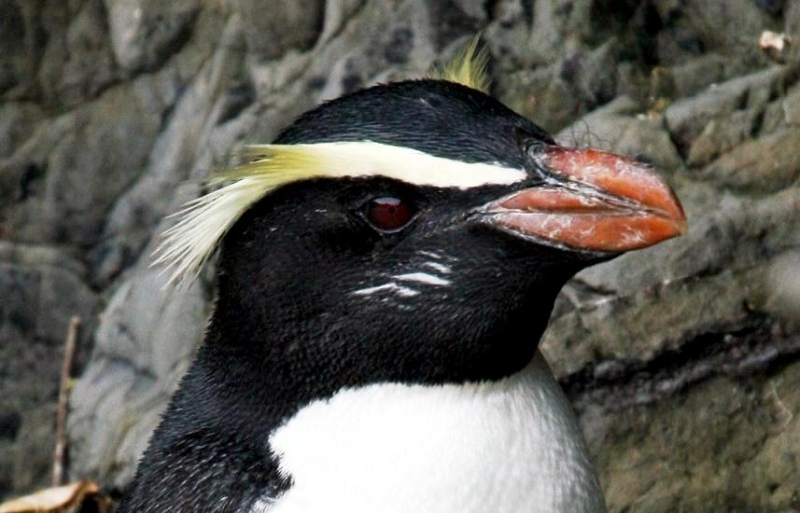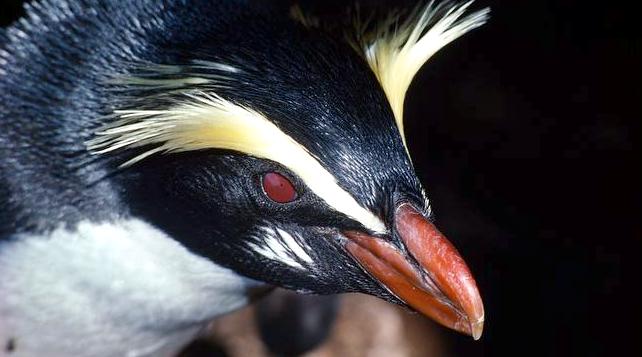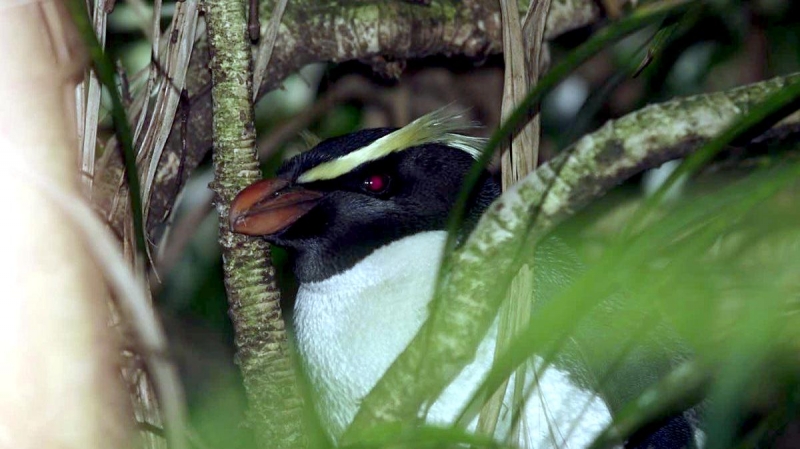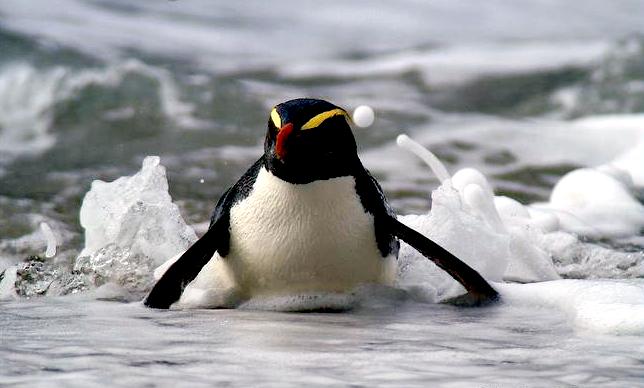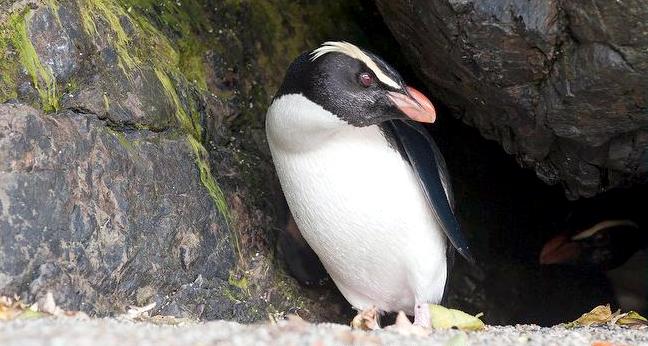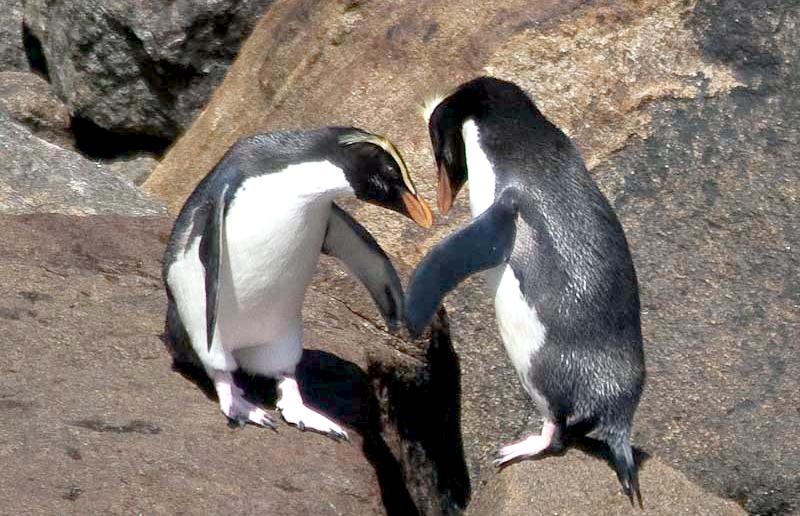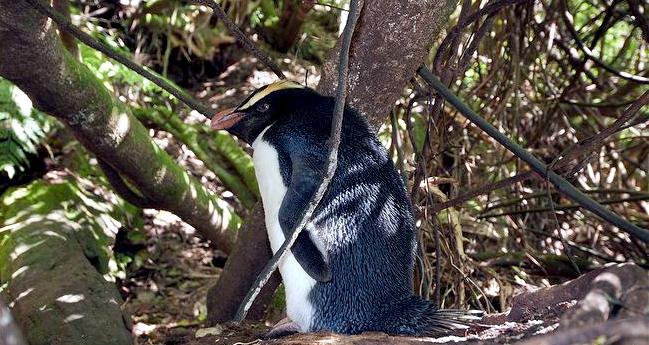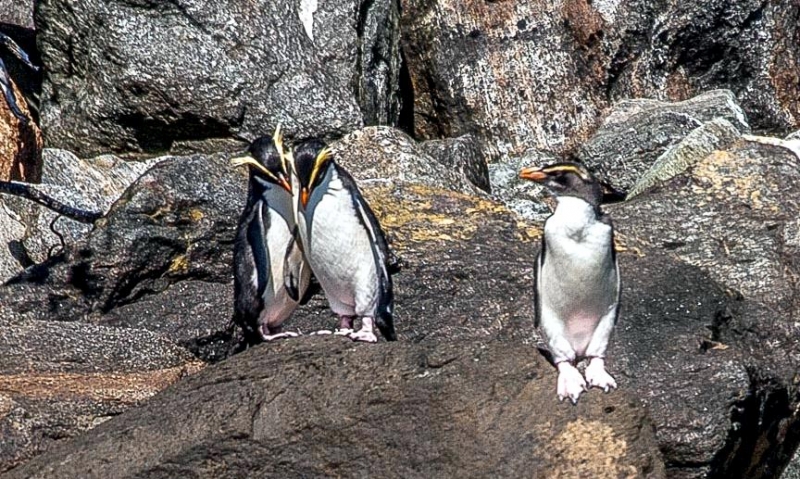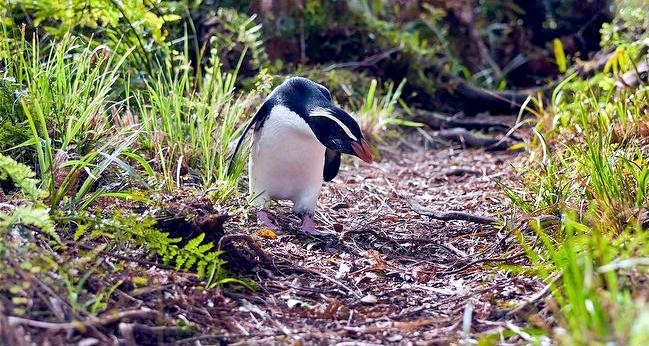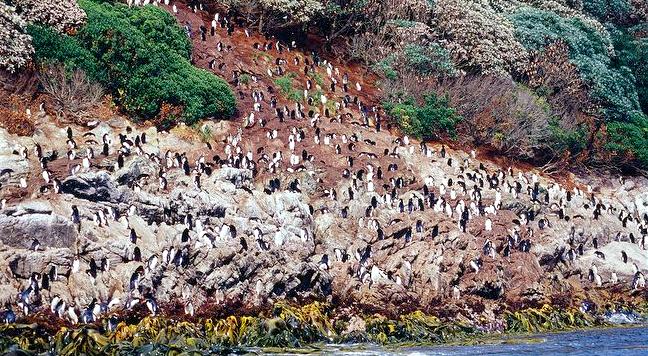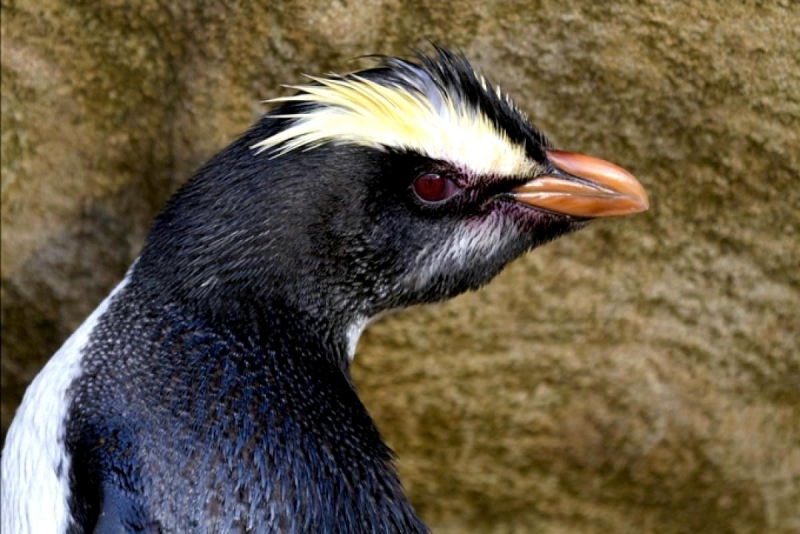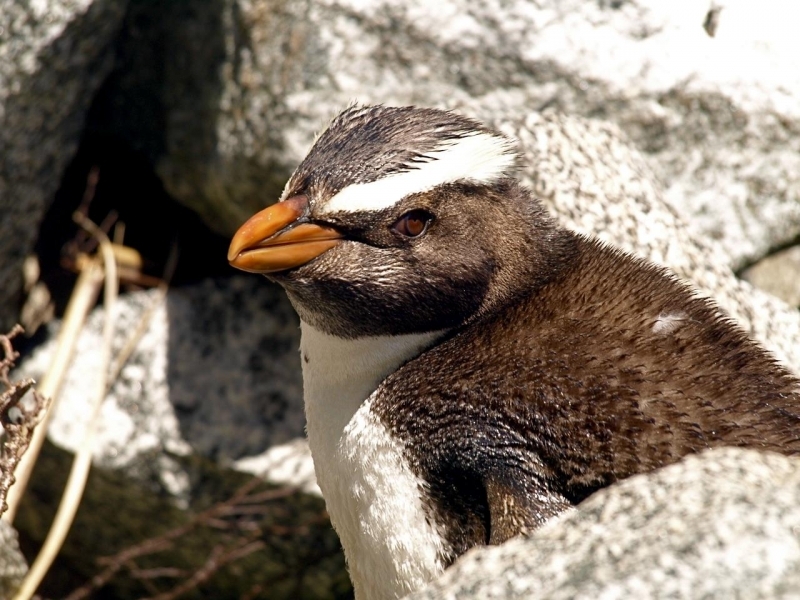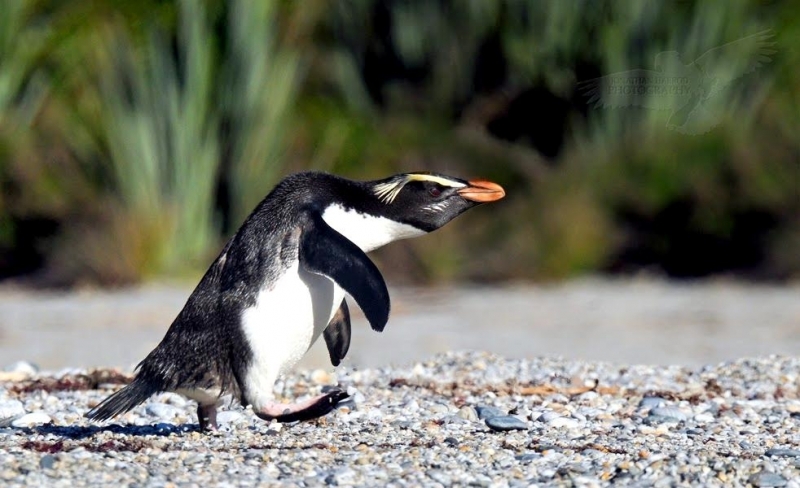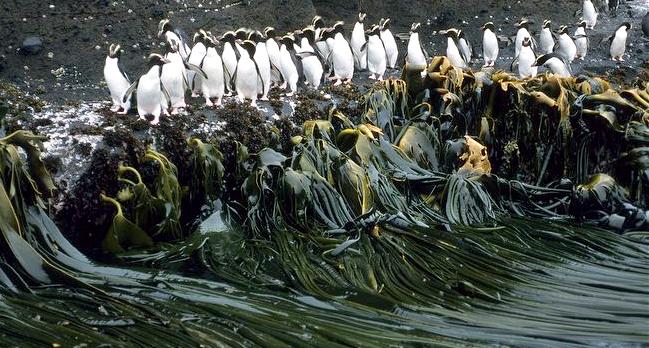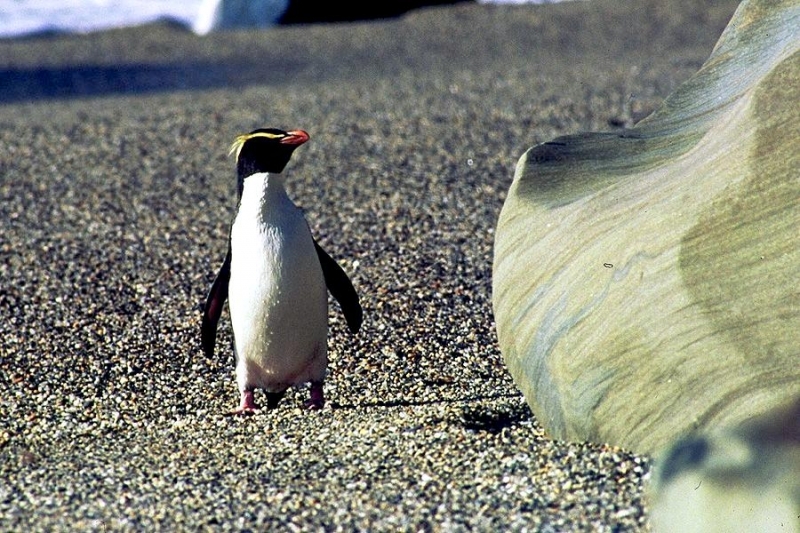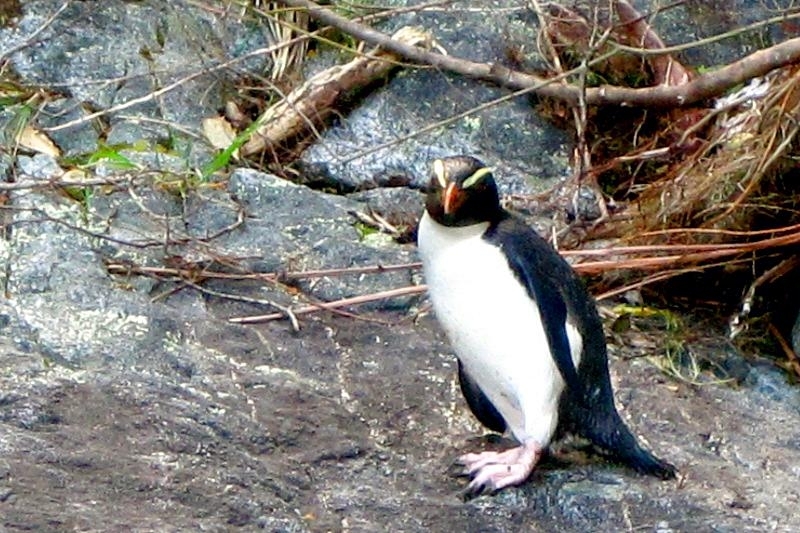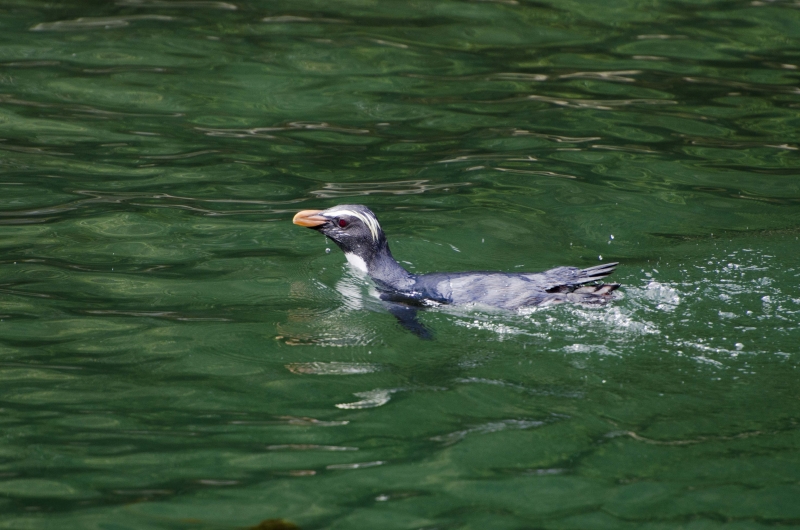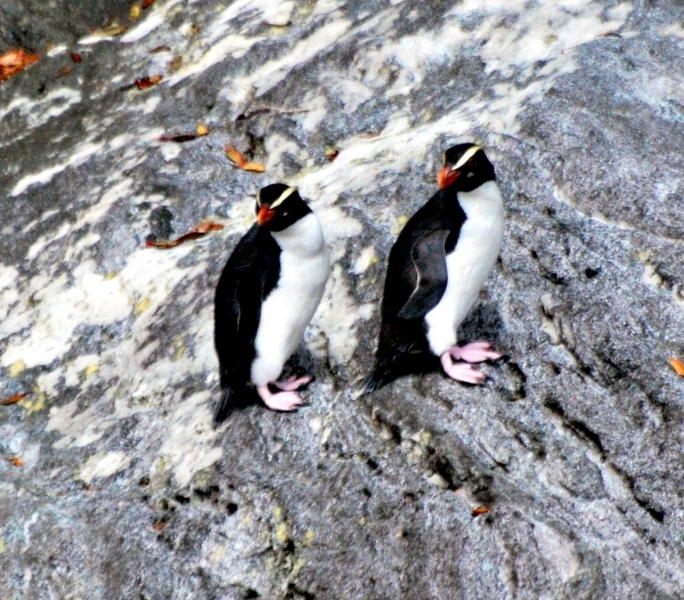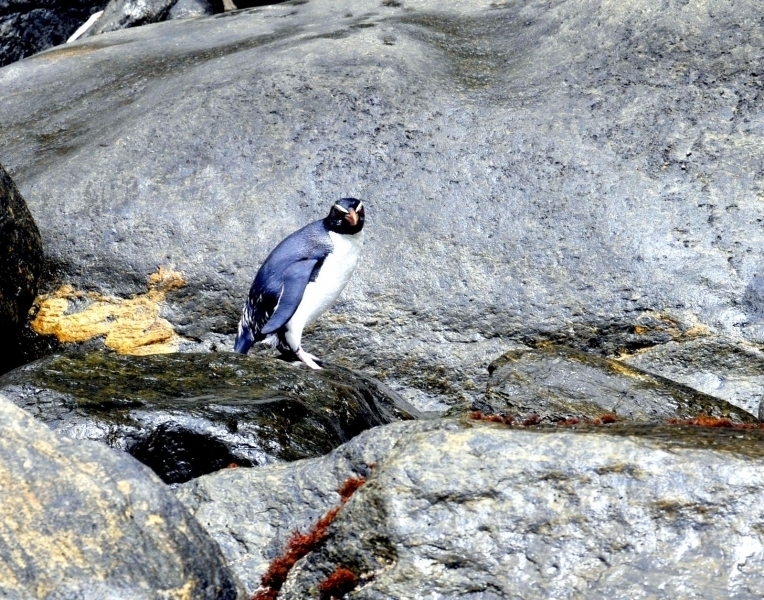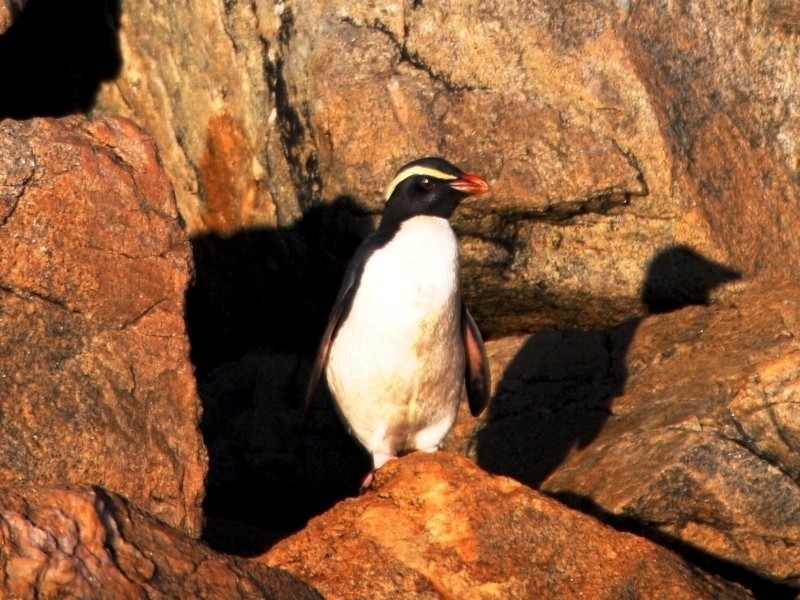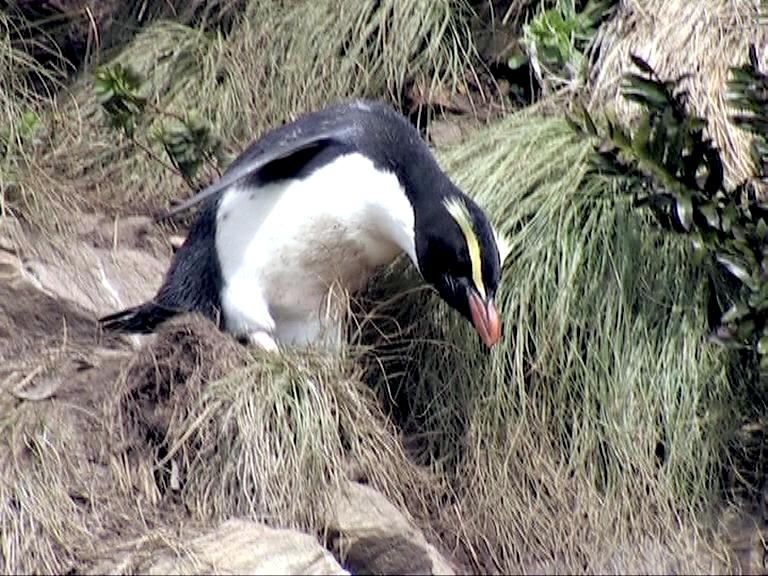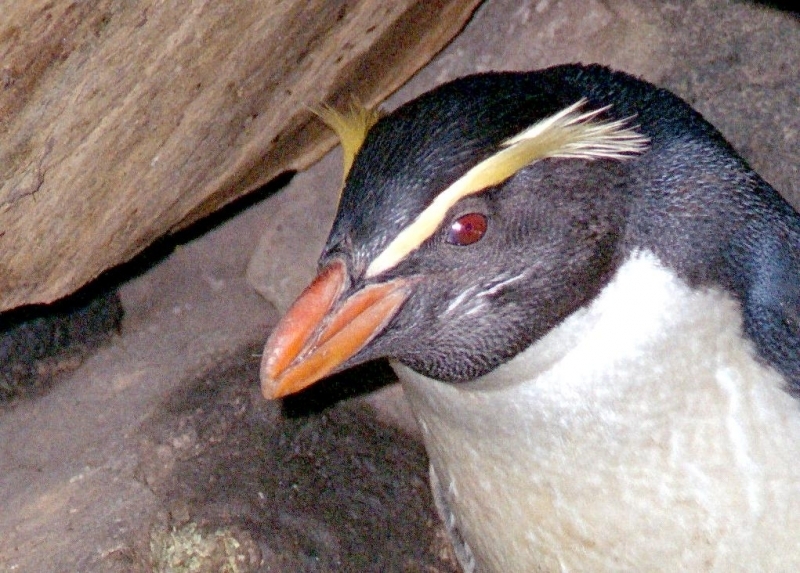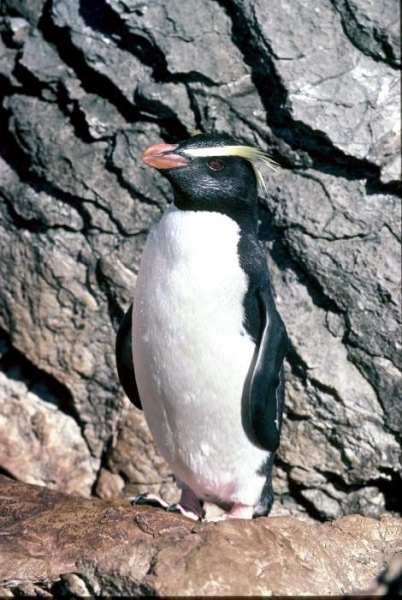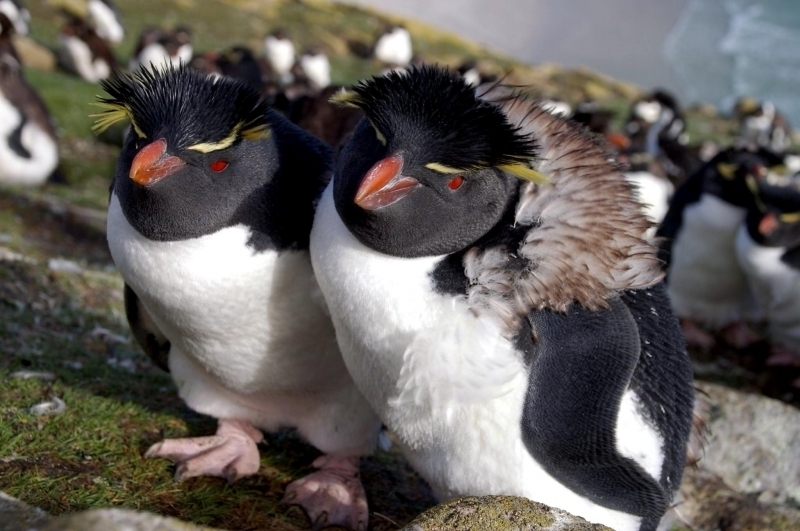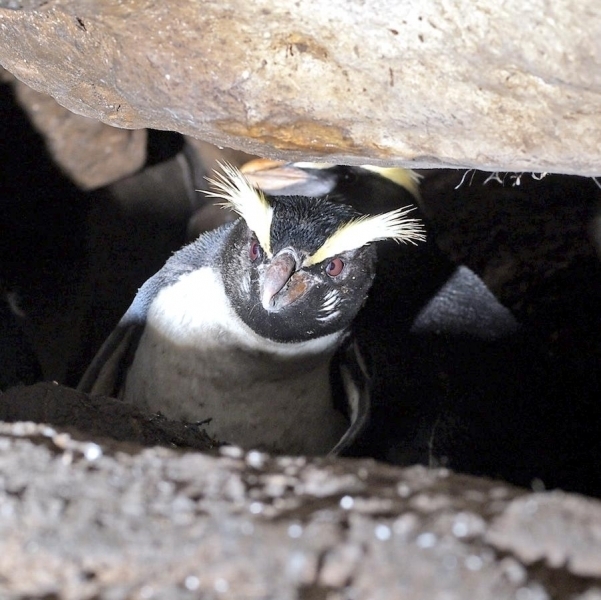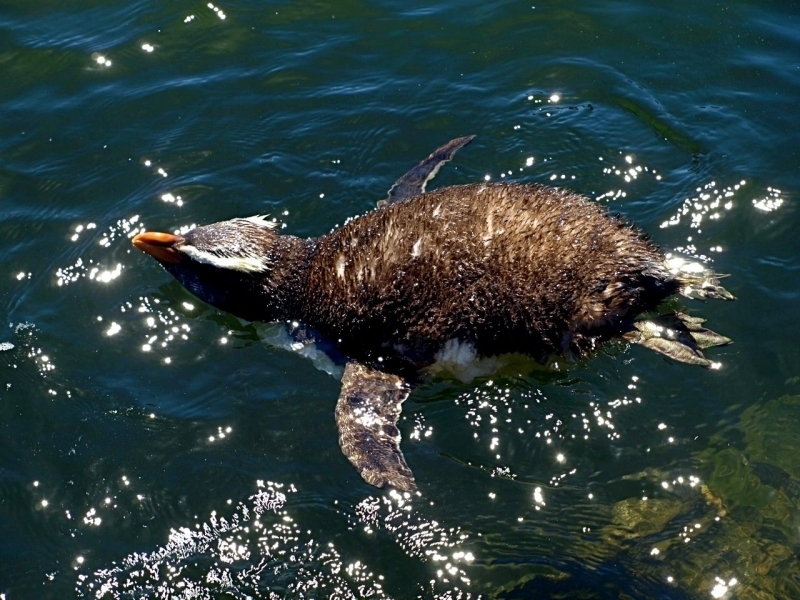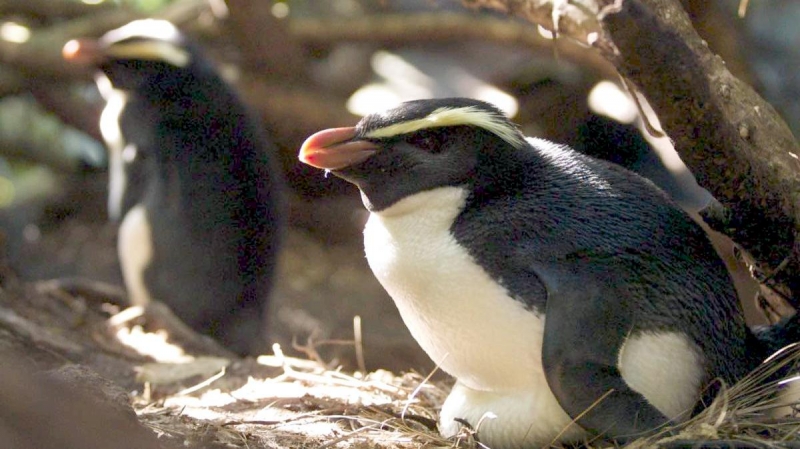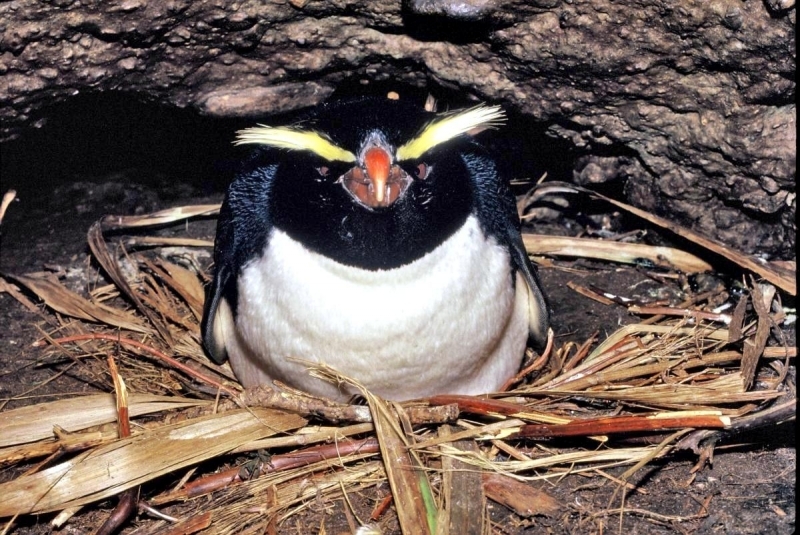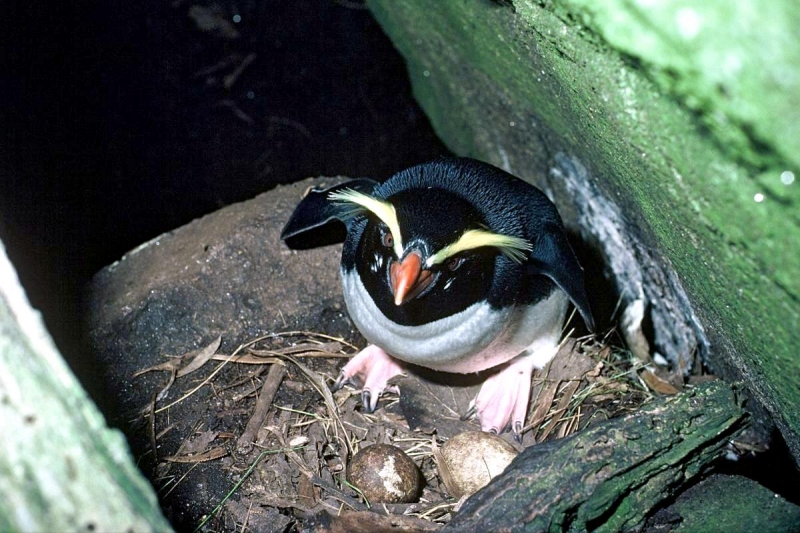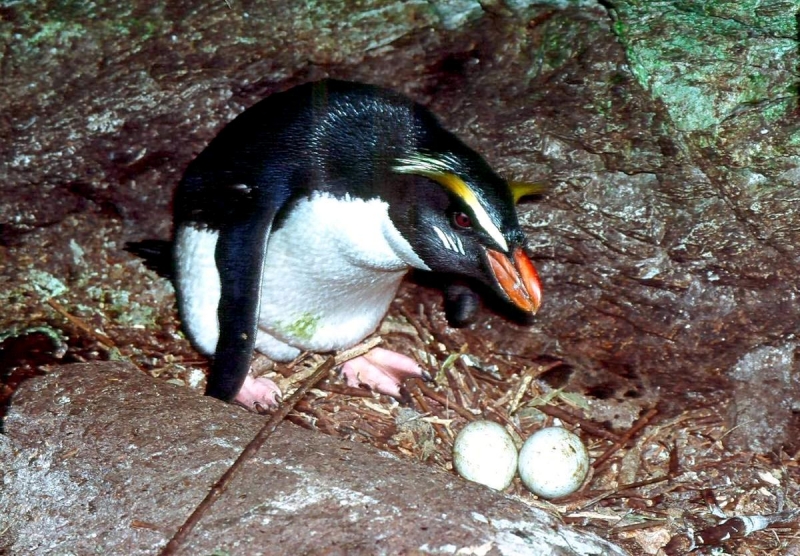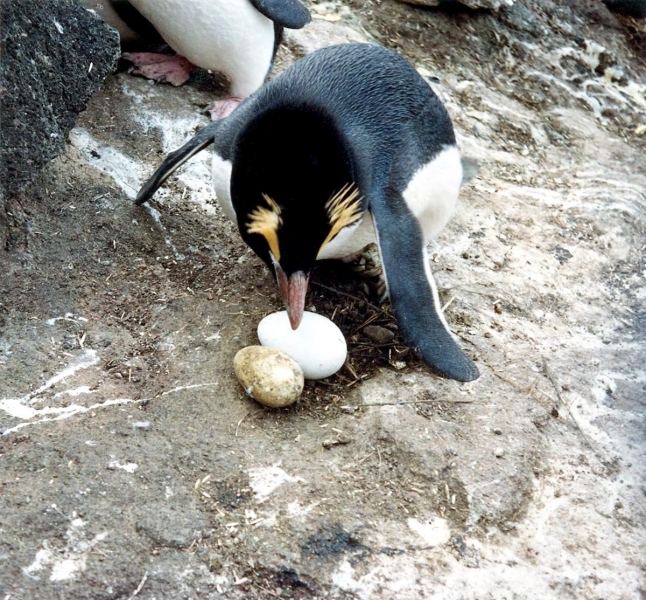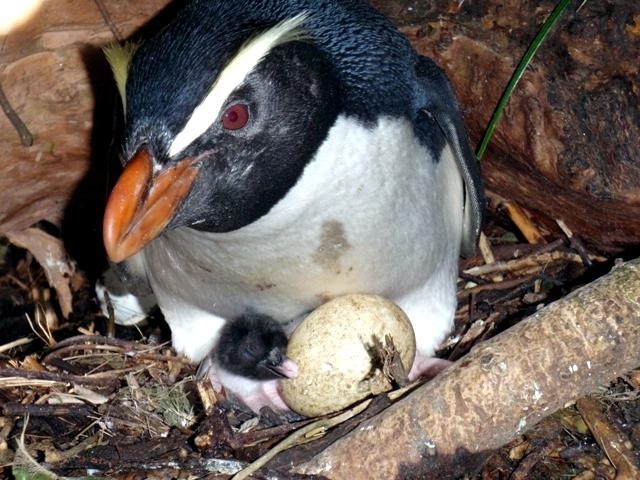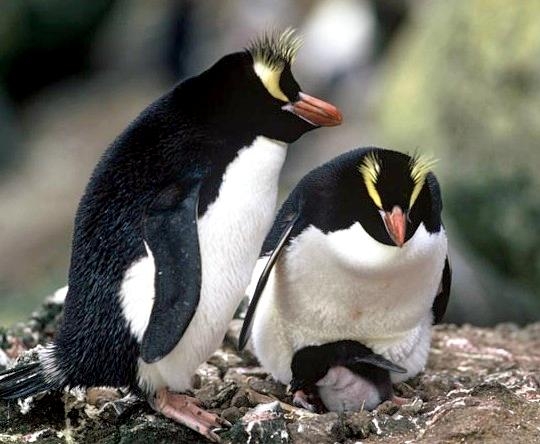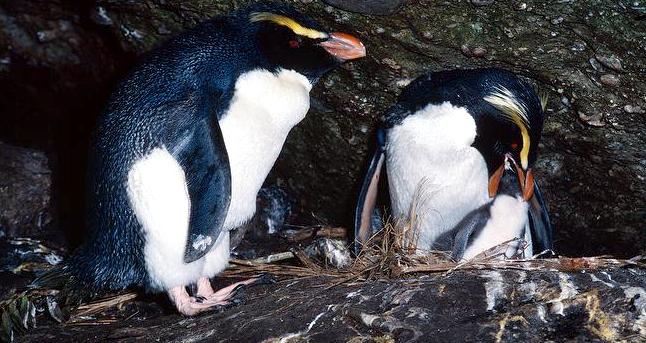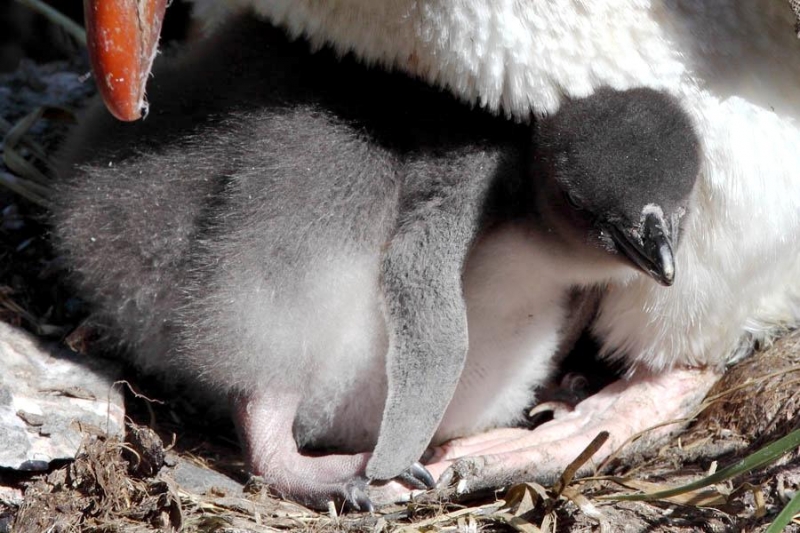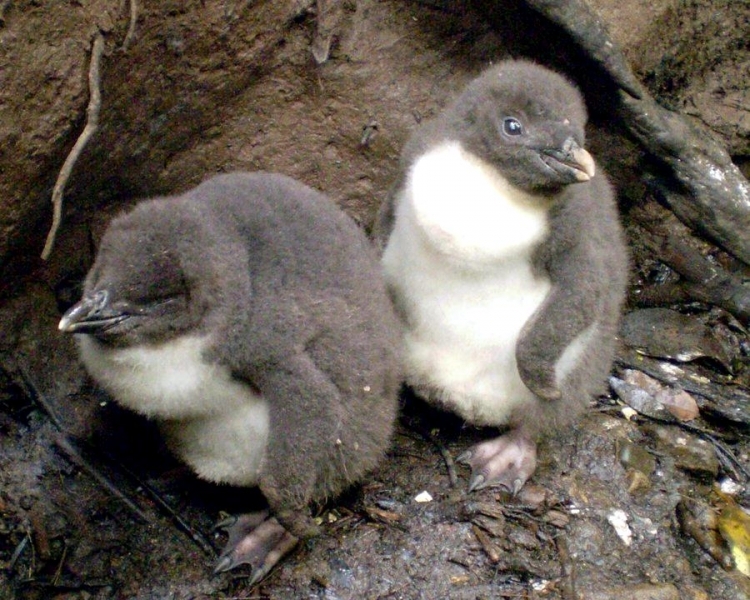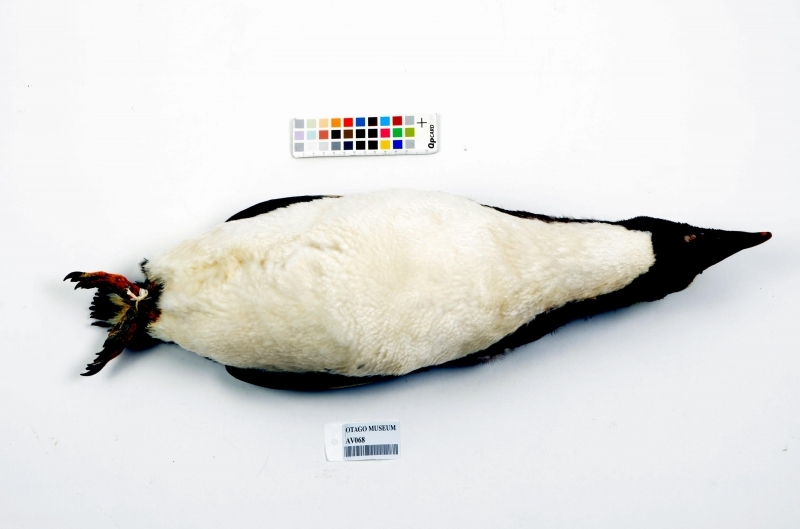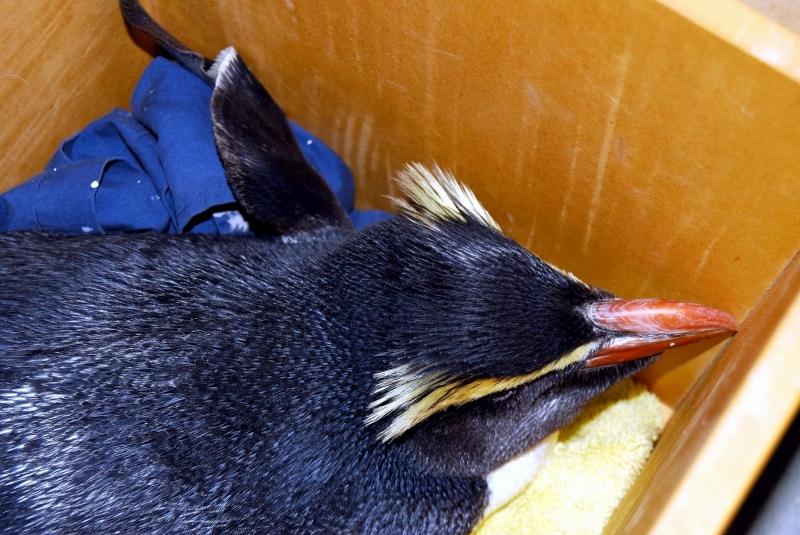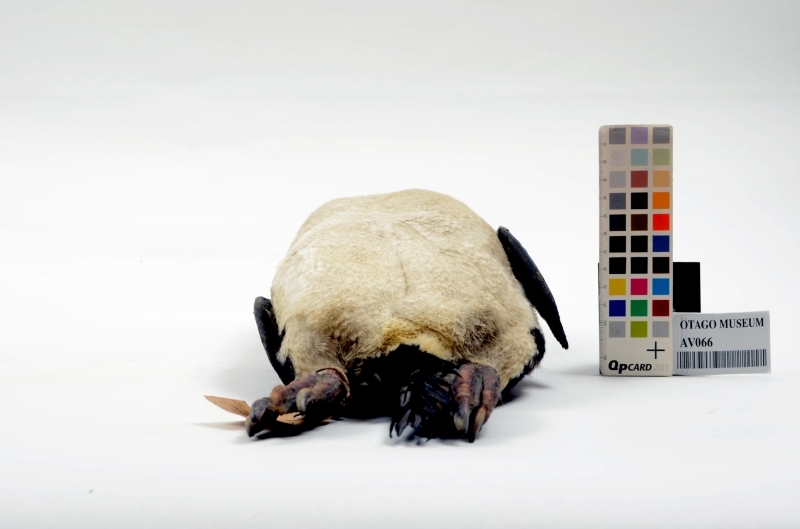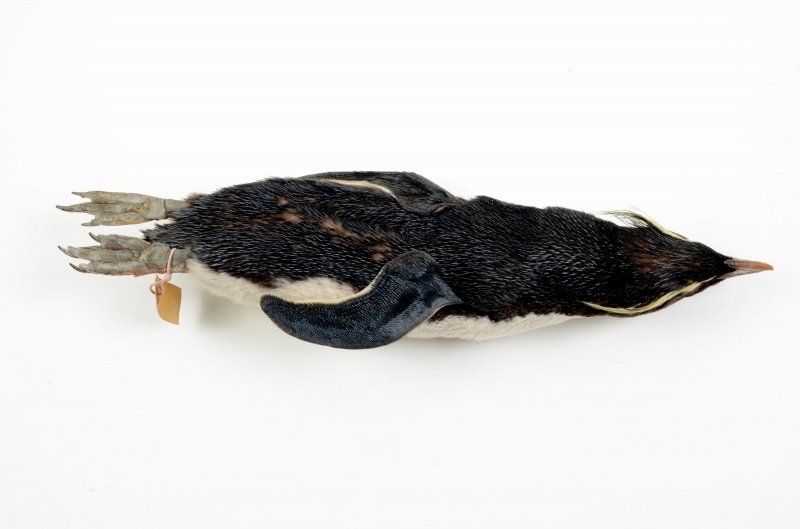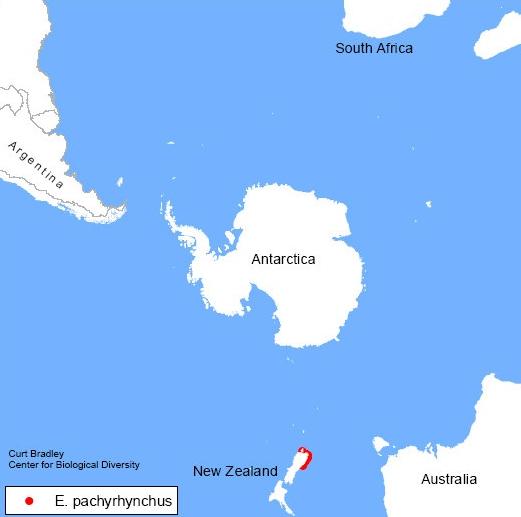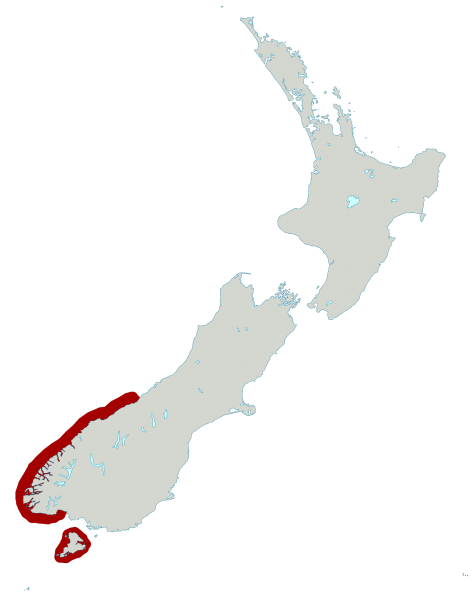“Eudyptes pachyrhynchus”
Fiordland-crested Penguins are one of the smaller species in the penguin family. They have black plumage on their back, head & throat with white plumage on their belly. They have a short, orange bill & pink feet and the characteristic yellow crests that extend from their bill to just above their eyes and behind their head. Fiordland-crested Penguins are often confused with Erect-crested Penguins, which also have crests above their eyes and with Snares-crested Penguins although the Snares is a larger species. The word Penguin first appears in the 16th century as a synonym for the now extinct Great Auk. When European explorers discovered what are today known as Penguins in the Southern Hemisphere, they noticed their similar appearance to the Great Auk of the Northern Hemisphere and named them after this bird, although they are not closely related. Fiordland-crested Penguins stand about 40 centimeters tall and weigh an average of 4 kilograms. This species is not as social as other penguin species and tends to form loose colonies with sparsely distributed nesting sites. Fiordland-crested Penguins are a migratory species found in the waters of Antarctica around the Southern Islands. During the breeding season, this species can be found on the coasts of southwest New Zealand, Stewart Island and the Solander Islands. Breeding sites are typically found near trees or among the rocks for protection. These seabirds feed on crustaceans, squid and small fishes.
Fiordland-crested Penguins spend most of their time in the open ocean, only coming ashore to breed in monogamous pairs. Males leave the sea to select a breeding site in late June or July followed by the females a couple of weeks later. These penguins do not form tight colonies like other penguin species, they tend to nest away from other pairs. Females lay 2 light green eggs at the nesting site protected by tree roots or stones during incubation for 4-6 weeks. Commonly only 1 egg hatches, although in some cases both chicks hatch, however the parents are often unable to feed both and the smaller of the 2 chicks dies. Like other penguin species, the male Fiordland-crested Penguin will often protect the chick while the female forages for food. When the chicks are a little older, both parents will leave the nesting site to forage. At this stage, chicks often gather in crèches (small groups of young penguins). At about 10 weeks, the chicks have developed their adult plumage and leave the nest for the sea. They will return after reaching sexual maturity around 5 years of age. Their name in Māori is tawaki or pokotiwha) and they are endemic to New Zealand. It currently breeds along the south-western coasts of New Zealand’s South Island as well as on Stewart Island and its outlying islands. It is sometimes referred to as the New Zealand Crested Penguin and was described in 1845 by English zoologist George Robert Gray. Its specific epithet derived from the ancient Greek pachy-/παχυ- “thick” and rhynchos/ρύγχος “beak”.
